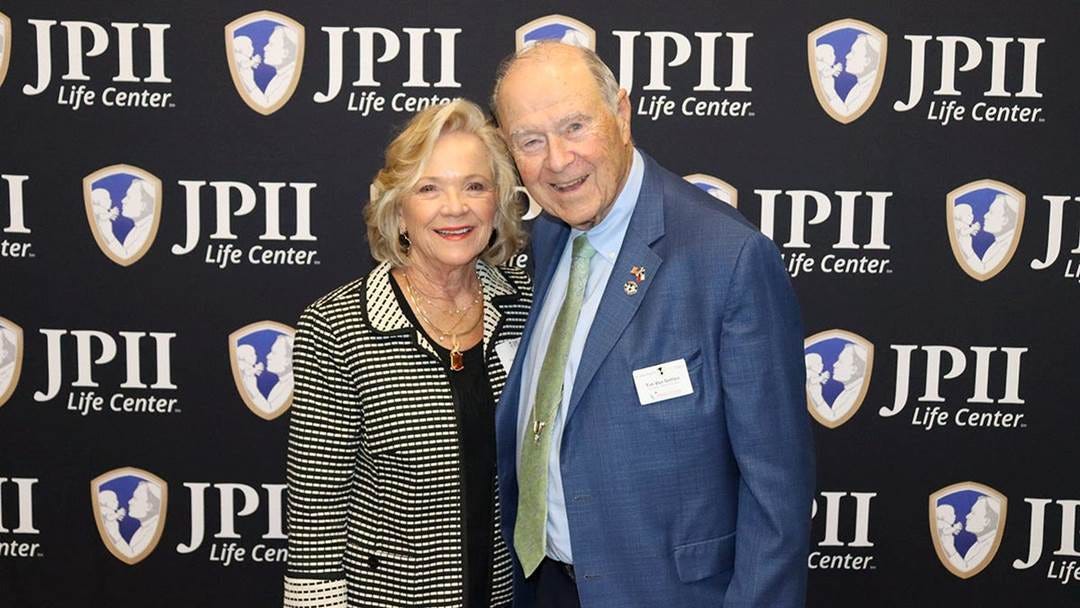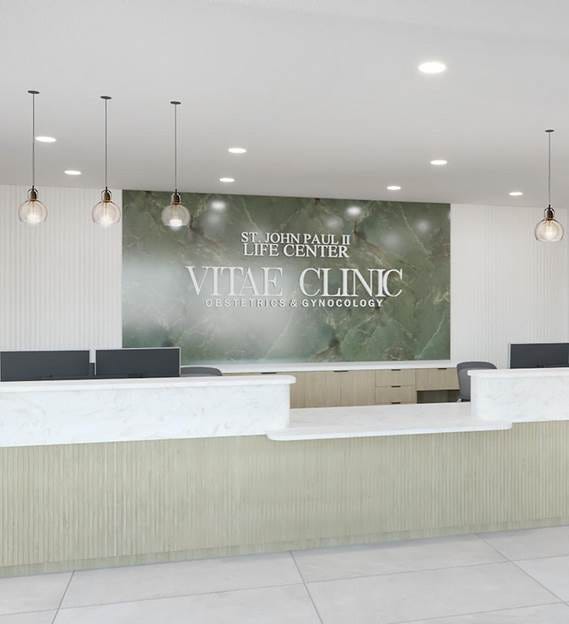What does life-affirming care for women look like in the Dobbs era? One couple’s inspiring answer
SBA supporters have a vision for moving beyond Planned Parenthood
**A note about Texas flooding: We are very saddened by the recent tragic loss of life in Kerrville, TX and the surrounding area. We hope our readers will join us in keeping Texas families in our prayers and hearts.**
After Dobbs, with more than 20 states protecting unborn children in their laws, and now as President Trump has signed the “One Big Beautiful Bill Act” that stops forced taxpayer funding of the abortion industry and its scandal-ridden giant, Planned Parenthood, many are asking what truly life-affirming, comprehensive women’s health care should look like. What alternatives are there to the profit-driven abortion industry business model? One Texas couple has been taking the initiative and providing an example for 15 years.
Tim and Pat Von Dohlen are longtime SBA Pro-Life America supporters. America After Dobbs recently spoke with them about how they put pro-life values in action in their community. (Our conversations are lightly edited.)
When the Von Dohlens launched the John Paul II Life Center, there were few like it in the country. Certainly, many pregnancy centers in their area typically offered clothing and material help, but nothing quite like the combination of a pregnancy resource center, full-service obstetrics and gynecology including care for high-risk pregnancies, and fertility care all under one roof. The Center employs physicians and a nurse practitioner, as well as a part-time, licensed psychiatrist, and provides health care for women and girls from youth through menopause.
From the start, serving moms and babies has been a team endeavor for Tim and Pat, who’ve been married for nearly two decades. “We’ve done everything together,” Tim says.
Their journey has also been, quite clearly, led by faith – and inspired by a very special opportunity they had to meet one of the most famous figures in the world, Pope John Paul II. Known as “The Great,” he often spoke about what he termed the “feminine genius”: the unique gifts of women and the dignity of motherhood.
“We were concerned some might not come to a center with a Catholic pope’s name, but he was so world-renowned, what he stood for…it was right and we’ve been glad ever since.”
The Center receives support from the Texas Pregnancy Care Network and accepts insurance. Everything else is privately supported. They serve patients, including many Medicaid recipients, regardless of social status or ability to pay. “About 75% are just women in a normal pregnancy seeking ob-gyn care. The other 25% are people with no means. We will not break even. But that’s part of our mission…They’re treated the same.” To Tim and Pat, that means a level of dignity and respect the Center’s patients may not have felt before.
The Von Dohlens also emphasize their educational programs, which “really help people get a firm footing for themselves…they’ve thought they were alone, and then they see there’s a whole series of things they can be part of to become self-sustaining.”
Reaching that goal may require less financial resources than one might imagine. “It takes about $2,500 to get to that point – much less costly than many government programs,” says Tim. Pat adds, “It was absolutely astonishing to us when we figured that out.”
The Von Dohlens note the need for their Center’s services didn’t slow down after Dobbs – it sped up. They attribute this to Texas’ position as a border state and to easily accessible abortion drugs, which are now estimated to account for around 60% of at least 1.1 million U.S. abortions a year. “Texas is a non-abortion state. Nevertheless, we have many women who are self-administering mifepristone. Many are still searching” for options and help when they find the Center.
Last year, the Center and its Vitae Clinic opened a new, state-of-the-art facility in Austin where they work closely with the nearby Ascension Seton hospital system. The new clinic is fittingly located on Marathon Boulevard – saving lives in the Dobbs era is more like a marathon than a sprint.
But the Center’s success would be the envy of any industry. They estimate about 98% of women choose life after seeing their sonogram. Since Dobbs, they’ve not lost an unborn patient. “We’ve had 80+ women who’ve come in, all trying to discern whether they were going to keep their child or not. We’ve helped every one of them. Every one has kept her child.”
They’re also proud of assisting some 300 women who were told they couldn’t conceive children. “All now have at least one child – all naturally.” With board-certified doctors and trained fertility care practitioners, the Vitae Clinic offers NaProTECHNOLOGY® as a scientific, but less harsh alternative to costly IVF cycles to identify and treat underlying causes of issues like recurring miscarriage.
“At our Center, you’re treated individually and the doctor finds exactly your problem and corrects it.” Pat adds, “It’s such a heartfelt situation with women who are struggling to get pregnant. We know there’s a method that is all-natural, effective, and friendly to the woman’s body.”
Texas has long been an epicenter of pro-life legislation – and a target of opposition. In 2016, out-of-state academics purported to find that maternal mortality in the state doubled in just a two-year period. Local and national politicians, such as Wendy Davis – infamous for her 11-hour filibuster of legislation to limit late-term abortion at 20 weeks, halfway through pregnancy, in 2013 – and Hillary Clinton seized on news of the report to create a narrative of a “public health crisis” allegedly connected to funding cuts to Planned Parenthood. By the time the improbable spike was exposed as a data error, the flawed study had been cited more than 300 times in the media. Similar claims continue to circulate after Dobbs, and typically receive similar breathless, unskeptical treatment.
As a young legislator, Tim got an early taste of what the pro-life movement was up against, facing off against Sarah Weddington, lead attorney who argued Roe v. Wade. “It was a conscience rights bill, the first response to Roe in Texas. We got it to the floor in the House...It was an 8-hour debate. I’ll never forget her crying” over the lack of legal abortion in America, he recalls. (Weddington would shed no such tears for her troubled client, Norma McCorvey, after the case was done.) “We got 120 pro-life votes to roughly 22 pro-abortion votes. We won in a big way, until it got over to the Senate. The Judiciary chair wouldn’t give us a hearing. Today we still fight for conscience rights to be protected. It was quite something to realize she’d convinced the Supreme Court to take the position they did.”
Though the Center’s work today is focused on health care, not politics, even they have occasionally been caught in the crossfire in liberal Austin. Politicians like Kamala Harris and Elizabeth Warren have urged colleagues to “take on” pregnancy centers and shut them down, and abortion activists deride them as “fake clinics” while ironically leaving hundreds of phony online reviews to drag down their ratings. Since Dobbs, scores of pregnancy centers and pro-life organizations have been physically attacked and vandalized.
“We’ve been picketed a bit, though not very aggressively,” says Tim. “We were plastered with signs, stickers on the streets around us saying no medical care is delivered in this place – crazy stuff. It’s all wrong.”
“A current member of the [Texas] House was on nationwide TV talking about pregnancy resource centers that supposedly don’t do anything. So I called her, invited her over, and she came. Then we said, ‘We’d like to know what you think after touring our Center?’”
Her response still makes Tim chuckle: “‘Obviously I wasn’t talking about y’all!’”
As the Center celebrates its 15-year milestone, the Von Dohlens keep moving full steam ahead. They’re actively helping develop age-appropriate, scientifically accurate, confidence-building curriculum for schoolchildren – parochial or public – to learn about their bodies and human development. They hope to be in 1,000 schools nationwide by year end.
“Until the good Lord says we’re through, we’re gonna keep going.”






